By George Elkind | Pride Source | May 27, 2022
Inside the rich LGBTQ+ history of one of Michigan’s queerest hubs.

Ferndale has been known as one of Michigan’s biggest queer hubs for decades. With many of the hallmarks that distinguish a Greenwich Village, a Castro, an Andersonville — traits like a walkable downtown, a diverse array of restaurants, bars and cafes, and housing stock that’s long proven catnip to renovators — it fits the mold of many urban queer enclaves which preceded it or developed in parallel. But it differs in one important way from those other areas: it’s a suburb, located just past Eight Mile beyond the bounds of the City of Detroit — and so it lies outside the heart of the metro area its resources often serve.
For Emma Maniere, a Grosse Pointe native and an NYU doctoral student studying Ferndale’s queer development, this fact is more than incidental. Ferndale, she explains, is considered by historians to be an inner-ring suburb — something that’s played a key role in shaping its identity, including its queer one, as distinct from but tied to the City of Detroit’s.

“It’s right on the outskirts of Detroit, built in the early 20th century, [with] homes geared toward working-class families,” says Maniere, noting that much of Ferndale’s housing stock went up in the mid-20th century. “It was designed as kind of a factory town.”
According to Maniere, Ferndale’s identity as a blue-collar burg held through most of its 20th-century history, when the most visible commercial centers of the region’s queer community were quartered further south along Woodward — well into the heart of Detroit.
In fact, it held even into the 1980s, when Ferndale’s downtown was riddled with commercial vacancies and the area, in the absence of the industries that had once held it up, became economically depressed. By the late ’80s, when a significant number of queer people began to move into the area, this situation created an opportunity in the form of low-cost space. But it presented them with an unglamorous history to push back against as well.
“Looking in the archives from the ’80s, ’90s — when more of a queer community [was] developing — there is a lot of rhetoric about ‘hip new Ferndale.’ Like we have to prove that we’re not a backwards, blue-collar, racist town. There’s a pushing up against what Ferndale formerly was, and still was to some degree, [or] maybe never was,” says Maniere, gesturing at aspects of history that rarely get written down — and so become the hardest to tell. “They understood themselves to be replacing something else that was older, that was whiter, that was straighter,” she says of Ferndale’s queer community at that time.
Less tony than Royal Oak, less intellectual than Ann Arbor — and cheaper than them both — the Ferndale that queer people have made a home of since the 1980s became a kind of safe space from fears both real and imagined, building its identity – whether successfully or not – on notions of inclusion. At the same time, its story intersects with histories of white flight and segregation which affected and divided the queer community then — and in so many instances, still do. Even while studying Ferndale’s history, Maniere seems struck by it as one that’s somewhat singular, if marked by imperfect efforts: a case study with a lot to tell.
Read the full article here: The City Without Closets: How Ferndale Became So Queer – Pride Source
